Before this year it was nearly ten years since I last picked up a paintbrush with any real intention. A decade of packed schedules, running a business, publishing my books, raising kids and just living life away from sketching and mark-making in any real sense.
But then I joined Substack on the advice of my lovely pal
and I discovered a thriving community of artists and creatives who were so welcoming and generous that something stirred deep within me. It was like my artistic muse had woken from a deep sleep, stretched, yawned and wanted to enjoy herself again.I decided to try something small, structured and gently brace, subscribing to the artists that appealed to me, watching past videos of their group events, revelling in the descriptions of their daily creativity. I did Adebanji Alade’s free sketch week and flexed my observation muscles, learning new techniques, re-treading old neural pathways and grinning to myself as I remembered how much fun it was to loose myself on the page.
Then last month, I took a bigger step and signed up for
’s 3-week still life challenge. Fifteen days of painting or drawing compositions— Monday to Friday, with weekends free to rest or play. No pressure to produce masterpieces. Just an open invitation to experiment, explore and express whatever was ready to come out on the page. It was exactly the kind of consistent, low-stakes, high-reward challenge I didn’t know I needed.As it turns out those fifteen little sessions taught me more than I expected—not just about art, but about perfectionism, presence and what it means to return to something you love.
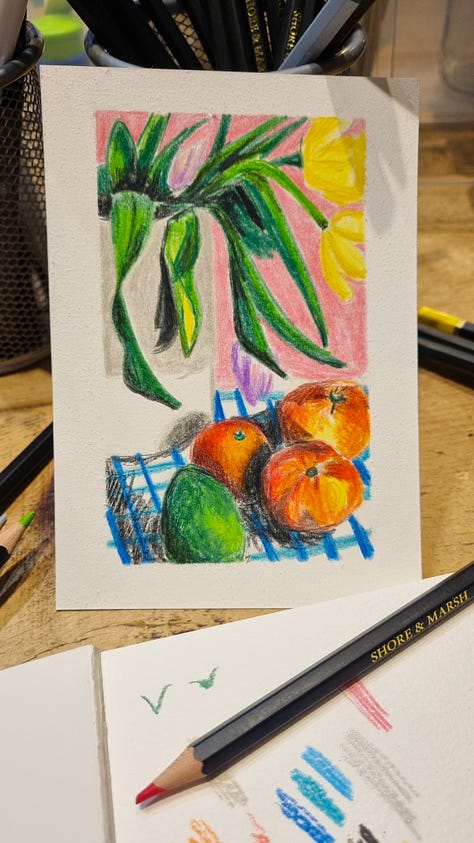

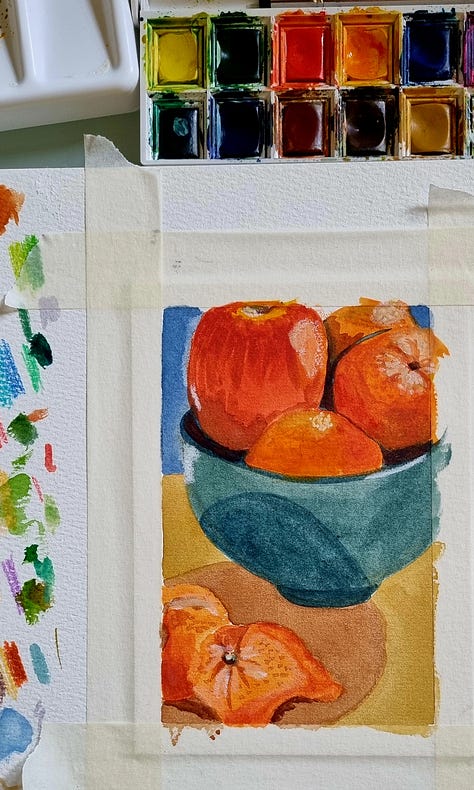
1. Freedom sometimes looks messy and that’s ok
I have a history of being a bit much when it comes to detail. When I’m writing, I’ll rewrite a paragraph endlessly, ruminating over the perfect word order. When I used to paint, I’d get lost in shading, agonise over perspective, and spend far too long trying to fix things that weren’t broken. But this challenge encouraged something new: bolder shapes, playful colour, and looser, more expressive mark-making.
Some days I felt like I was fighting my own hand—wanting to tighten lines, tidy everything up, get it “right.” Other days, I let go and the lines ran wild (well, wild for me). Those were the most joyful ones.
The bolder the piece, the freer I felt. I wanted to bottle that feeling and keep it on the shelf for the days when my inner critic loomed large.
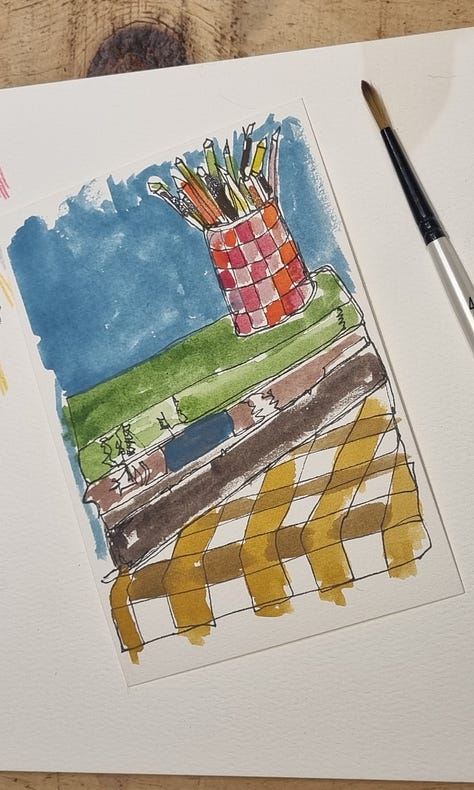
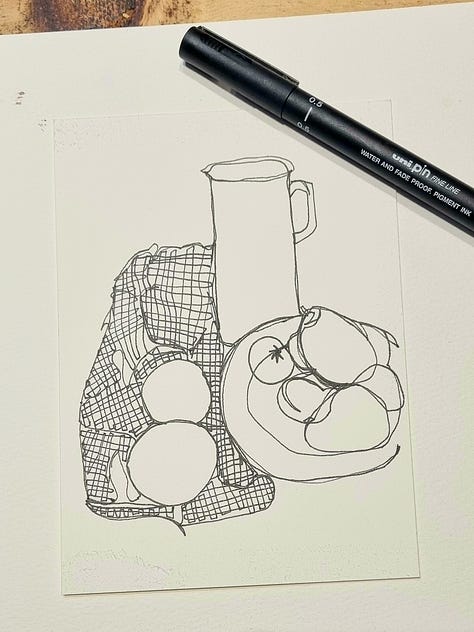
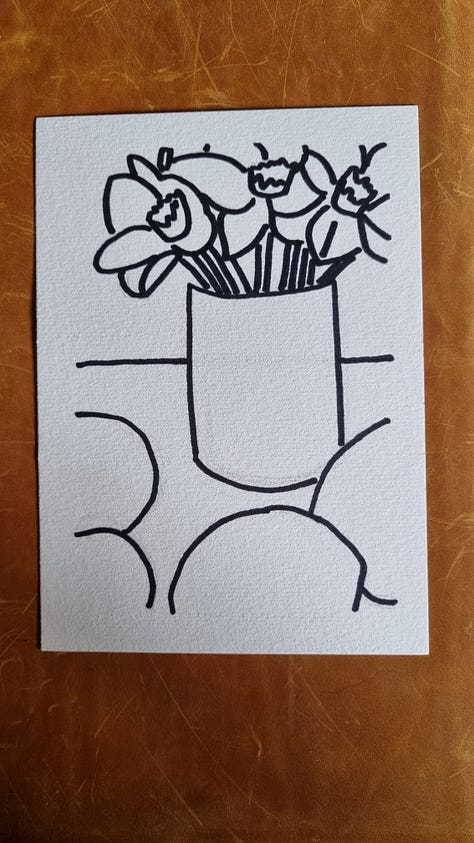
2. Perfectionism doesn’t go quietly, but it does get quieter
At the beginning of the challenge my marks felt small and overly detailed as I tried to capture everything on the page. My colours were as close as I could get them to life, but the pieces felt muted somehow. The first week, that critical little voice came with me to the page every day.
But. as the challenge went on, I loosened up and felt more confident to play with my framing, choosing where my focus lay and leaving items out or having them only partly shown.
Similarly, my colour palette became bolder and brighter, taking inspiration from the videos Helen shared in her resources (and from Helen’s own work) to pick brighter contrasting colours.
I decided to allow myself not to like some of the marks I made and just leave them. I began to notice when I was clinging to “getting it right” and tried to gently guide myself back to just having fun.


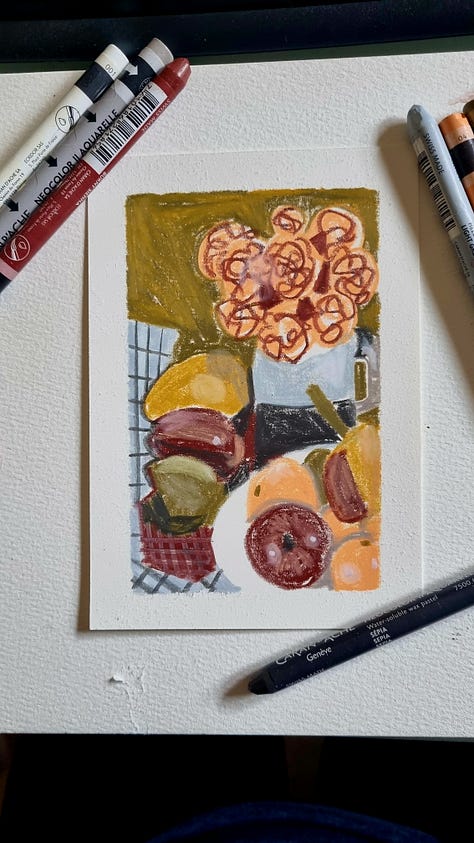
3. Still life is more alive than I remembered
I’ve never been a fan of still life. It felt stilted and unnatural and brought back memories of art class at school and my own need to make everything just so.
But as the days passed the creative repetition built rhythm. A bowl of oranges. A coffee pot. A tablecloth. Somehow, turning these everyday objects into a creative ritual made me notice them differently.
I realised there’s something meditative about the simplicity of still life. It invites you to slow down, to look, really look, and to capture a moment just as it is—not perfectly, but in a way that honours how YOU see it, how you feel about it or just in a way that makes you smile.
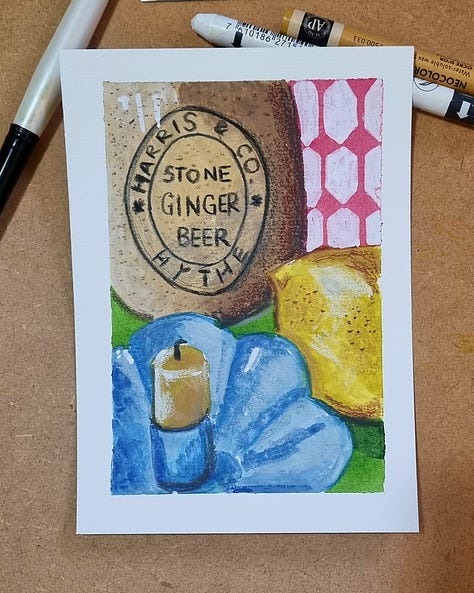

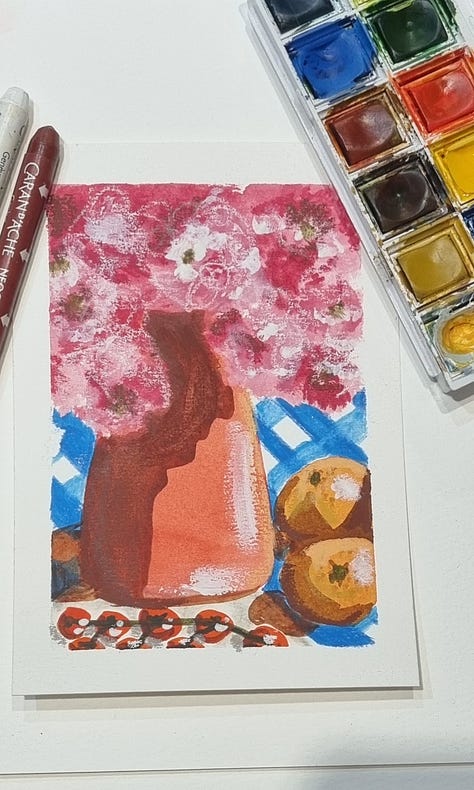
What I’m taking with me
Creativity doesn’t have to be big or bold to be meaningful. A few minutes a day. A corner of a page. A wobbly sketch. It counts. It builds. And most importantly—it brings me joy.
I want to build on the bolder colour palette and looser lines I experimented with in the challenge, but I’m letting it be fluid. And most importantly I’m holding on to what I learned: my creative muse doesn’t like control or judgement. She needs the freedom to play, an open heart and a curious mind.

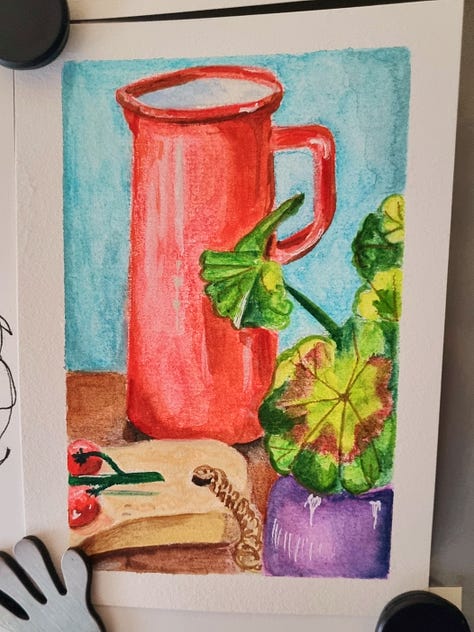
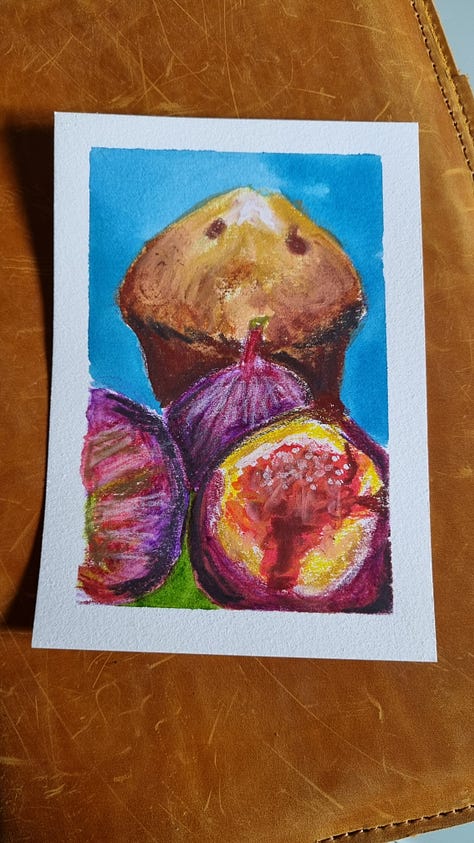
To anyone thinking of coming back to a creative practice…do it.
Please don’t wait for the perfect moment, the perfect kit, or the perfect inspiration. Just start. Sketch the mug next to your laptop. Smudge some colour into your journal. Let it be imperfect.
Because honestly? No matter how loud your inner critic shouts (and if she’s anything like mine she’ll get her megaphone out), the joy is in the journey.
Have you ever returned to a creative practice after a long break? What did it teach you?
With paint on my fingers and joy in my heart,
Michelle 💙
New here?
✨Find out what Chapters & Checklists is about
✨Check out the Authors Resource Hub and Behind the Debut podcast
✨ Download my Notion Simple Author Templates






Is there anything you’re not good at woman?! I absolutely adore everything you’ve created. I love how you were able to quieten the critical voice within you that demanded perfection and instead lean into the gorgeous messiness of trying new things. Thank you for sharing what you learned xx